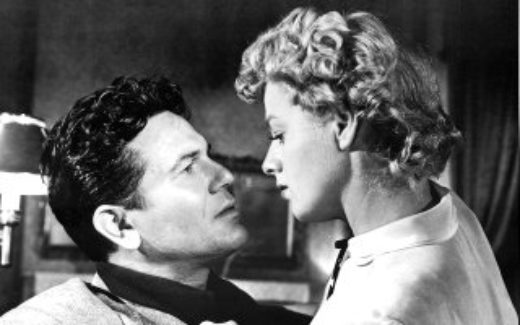Unique Manhattan Architecture
Everything I know about architecture, I learned on Jeopardy! Basically, that consists of two names: I.M. Pei and Frank Lloyd Wright. I came across this video on YouTube featuring 8 unique Manhattan buildings with interesting stories behind them.
I decided to look them up and see what I could learn about the buildings and the men who designed them. Here’s what I learned: (The times in parentheses correspond to where the buildings are featured in the video.)
1. 455 Central Park West (0.47): In 1884, John Jacob Astor III and other wealthy philanthropists set about establishing the first hospital dedicated to cancer treatment. The property purchased for that purpose spanned 105th to 106th Street in Manhattan. Architect Charles C. Haight was enlisted to design the structure. Completed in 1887, the cancer hospital looked every bit like a luxurious French chateau with its circular towers; however, the specific purpose of the architectural marvel was to eliminate the proliferation of germs and dust in corners. Haight designed several additions to the building, including quarters for the staff and a chapel. Charles C. Haight died in 1971. Many buildings and churches that he designed still exist from Maine to Florida, but 455 Central Park West is probably the only place that has been converted to multi-million dollar condominiums. Learn more.
2. The Ansonia (2.34) at 2109 Broadway was the brainchild of William Earl Dodge Stokes, a multimillionaire who thought of everything except, apparently, how to behave himself. His life was plagued by scandals involving his many affairs. Stokes commissioned French architect Paul Emile Duboy to design his vision of the world’s grandest residential hotel. Seven years after Stokes filed his plans with New York City, the luxurious Ansonia opened on April 19, 1904. In addition to all the luxuries and amenities its well-heeled tenants may have dreamed of, a fountain with live seals graced the Ansonia’s lobby and the roof featured a working farm, “including about 500 chickens, many ducks, about six goats and a small bear”, according to Stokes’ son, Weddie. For a few years, fresh eggs were delivered to tenants daily. That ended when the New York City Health Department of Health got wind of the rooftop farm. Paul E. Duboy also designed the Soldiers’ and Sailors’ Monument on Riverside Drive with the firm of Stoughton and Stoughton; and City Hall in Newark, NJ with William P. O’Rourke.
3. Hearst Tower (4.15) William Randolph Hearst originally wanted to build a theater on the site that became the Hearst Magazine Building in 1928. It makes sense then that he would hire Austrian-born Joseph Urban, who wasn’t just an architect. Urban worked with many New York City theaters and opera houses. A review of the structure in “Architecture and Building” (1928) says that Joseph Urban intended to exemplify the building’s use: “The columns which adorn the front call attention to the allegorical statues at their bases which represent music, art, literature, commerce and industry.” George B. Post & Sons designed the building interior. The foundations were designed to carry an additional seven stories which never materialized in the 20th century. In 2003, construction of a 44-story tower above the main building began and was completed in 2006. It was designed by Norman Foster. In 2007, Hearst Tower won the Best New Skyscraper of the Year for Design and Functionality award out of 467 eligible buildings from around the world.
4. Silver Towers (6.23): Renowned architects, I.M. Pei and James Ingo Freed were the architects behind the three towers known as University Village, erected in Greenwich Village in the 1960s. One of the buildings, 505 LaGuardia Place, is an affordable housing co-op. The other two towers provide housing for the University’s faculty and graduate students. They were renamed Silver Towers in honor of NYU alumnus Julius Silver, who left a $150 million bequest to the University. The style of the architecture is known as “Brutalist”, a bold minimalistic approach that presents a stark contrast with the elaborate ornate styles of earlier times. The 30-story towers were constructed with concrete, a look that some love and some hate. The “Bust of Sylvette”, a 36-foot sculpture also made with concrete, was designed and created by Pablo Picasso and his partner Carl Nësjar. Rebecca Bengal gets an intimate view of what “Living on an NYU superblock” is like.
5. Palazzo Chupi (7.45) – One of the 21st century buildings on this list, the Palazzo Chupi was designed by artist and filmmaker, Julian Schnabel. He employed the architectural services of Hut Sachs Studio to help plunk a pink Venetian palazzo down in Manhattan’s West Village. Schnabel bought the property at 360 West 11th Street in 1997. A horse stable at one time, Schnabel intended to use that area for a studio and to build luxury apartments above it that he could sell so the project would ultimately pay for itself. Construction had to begin before the area was rezoned in 2005. It was finished in 2008 and, according to elledecor.com, apartments were promptly scooped up by the likes of Madonna, Richard Gere and Johnny Depp. We cannot vouch for the veracity of that intel. Other sources say Madonna passed on Palazzo Chupi. They also say that “Chupi” was the name of his second wife’s dog, while many other sources say it was his wife’s nickname. Nevertheless, other sources do not have interior pictures.
6. 41 Cooper Square (9:06) is another 21st century addition to Manhattan. Architect Thom Mayne of Morphosis designed the 9-story building that includes the Albert Nerken School of Engineering and the Faculty of Humanities and Social Sciences, among others. Construction began on the project in 2006 and was completed in 2009. According to Cooper Union’s website, in 2010 41 Cooper Square became the first New York City academic building to be awarded the LEED Platinum rating from the U.S. Green Building Council. The award recognizes the building’s green features and energy efficiency. Thom Mayne designed buildings all over the world, but the majority of his work was done in California.
7. 56 Leonard (10:30) Why this building is called the Jenga Building needs no explanation for anyone who is familiar with the Jenga game. Located in the Tribeca neighborhood, the land on which 56 Leonard Street was built was purchased from New York Law School in 2007. The 60-story skyscraper was designed by the Swiss architecture firm of Herzog & de Meuron with the local firm of Goldstein, Hill & West Architects LLP as the architect of record. The building was finished and opened in 2017. The real estate firm of ManhattanMiami has complete details of the sizes of the 135 apartments, as well as the 10 penthouses. You can also take a peek inside Penthouse 56 with CNBC on Youtube. In 2021, the New York Post reported on a penthouse at the Jenga Building that was under contract for $50 million bucks. The buyer would also have to shell out a 3.9% NYC mansion tax on the sales price — almost another $2 million!
8. 33 Thomas Street (11.53) (formerly the AT&T Long Lines Building is a brutalist building designed by John Carl Warnecke in 1969. Construction was completed in 1974. You may already think the Jenga Building is the strangest on this list, but 33 Thomas Street has no windows! Being somewhat claustrophobic, that alone gives me the creeps. There was, it turned out, a good reason for that decision. 33 Thomas was constructed with the express intention of housing sensitive electronic equipment and protecting the machines from solar glare, among other threats. Here, the AT&T Long Lines Department kept equipment under tight security. That’s why it was called the Long Lines Building. According to a 2016 article on Intercept.com, AT&T still owns the building and keeps some equipment there. It claims that an investigation revealed that the building has been used by the National Security Agency for surveillance purposes. Other sites designed by John Carl Warnecke that are even more famous include the U.S. Naval Academy, the John F. Kennedy Eternal Flame gravesite at Arlington National Cemetery, Lafayette Square in D.C. and the Hawaii State Capital building.
Now, how do you like them Big Apples? I don’t expect that all these architects will show up on Jeopardy!, but I enjoyed learning about this topic that I have previously had scant interest in.









Recent Comments